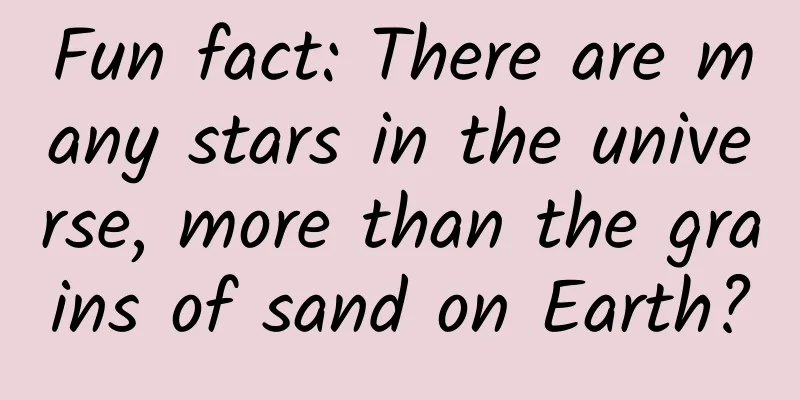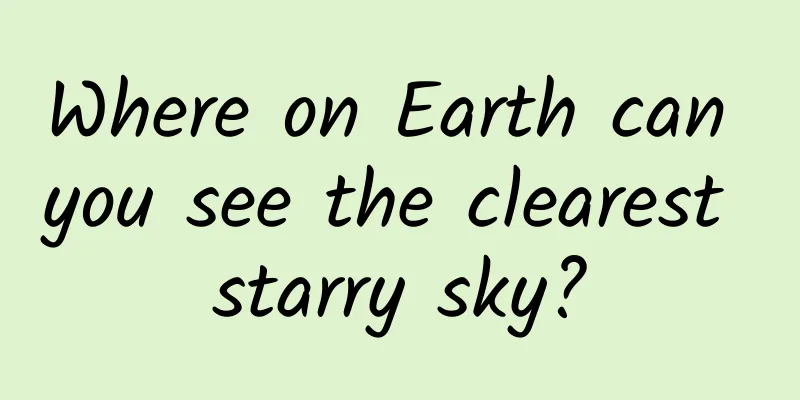Fun fact: There are many stars in the universe, more than the grains of sand on Earth?

|
The universe is vast and boundless, and the number of stars in the universe is countless. Some people even believe that the number of stars in the universe is more than the number of grains of sand on the earth. Is this true? I think this statement underestimates the amount of sand on the earth. So how much sand is there on the earth? It is currently difficult to calculate the specific amount of sand on the earth. We can only get the approximate amount of sand on the earth through rough calculations. There are two places with the most sand on the earth, one is the desert and the other is the beach. Let's talk about deserts first. Since there are so many deserts on the earth, we only count the top ten deserts, namely: Sahara Desert, Arabian Desert, Libyan Desert, Australian Desert, Gobi Desert, Patagonia Desert, Rub' al Khali Desert, Kalahari Desert, Great Sandy Desert, Taklimakan Desert. The total area of these ten deserts is about 1,976 square kilometers, or 1,976,000,000 square meters. Next is the beach. Since different beaches have different widths, it is not easy to calculate. We assume that all beaches on Earth are 50 meters wide, and the total length of the Earth's coastline is 750,000 kilometers. Then we can easily calculate that the total area of the Earth's beaches is 37500000000 square meters. Adding the total area of the beaches to the total area of the ten major deserts, we get a total area of sand on Earth of 39476000000 square meters. Knowing the total area, the next step is to calculate the volume. The depth of every desert area and every beach on the earth is different. We still assume a uniform and easy-to-calculate depth of 10 meters, so we calculate that the total volume of sand on the earth is 394,760,000,000 cubic meters. Now we only need to know the size of each grain of sand to calculate the total amount of sand on the earth. Again, since each grain of sand is different in size, we still choose a number that is easier to calculate. Let's assume that the diameter of each grain of sand is 1 mm, so one cubic meter contains 1 billion grains of sand. Multiplying the total volume of sand on Earth by the amount of sand in one cubic meter, we finally conclude that the total number of sand on Earth is 3.9476X10^21 grains. So how many stars are there in the universe? This is also unknown, and different scientists have different views on this. Based on an article published in the Astrophysical Journal in 2016, we assume that there are 2 trillion galaxies in the observable universe, and the mass of each galaxy is 1 million times the mass of the sun. Since the vast majority of galaxies are red dwarfs with smaller masses, we assume that there are about 10 million stars in each galaxy. Of course, there are some large galaxies like the Milky Way in the universe, which contain hundreds of billions of stars, but there are also many very small galaxies, and small galaxies account for the vast majority, so we just take an average value for the convenience of calculation. According to the previous assumptions, we can calculate that the total number of stars in the observable universe is 2x10^19, which is much less than the number of grains of sand on Earth. Moreover, we have only calculated the ten largest deserts on Earth. If all deserts are included, the number of grains of sand will increase significantly. Therefore, although there are many stars in the universe, they cannot be compared with the number of grains of sand on Earth. Of course, this is just a rough calculation, and we only considered the number of stars in the observable universe. No one knows how vast the space is outside the observable universe, let alone how many stars there are in that vast space. Perhaps compared with the entire universe, the observable universe with a diameter of 92 billion light years is just an insignificant speck of dust. However, these are things that cannot be verified, and there may never be a way to verify them, so we have no way to use those unfounded numbers for comparison. At least within the observable universe, the number of stars is far less than the number of grains of sand on Earth. |
>>: In order to grow taller, they actually "broke" their legs?
Recommend
Have you ever seen a railway that runs through the air and in a cave?
Vocabulary Logistics transportation completion an...
Guokr GP2 review: Can smart speakers also return to sound quality?
Not long ago, we reported on the Guokr WiFi Speake...
Super practical! A comprehensive guide to the APP design process from a master's personal notes
Today's translation is full of useful informa...
Moji Weather, which has made a lot of money by betting on advertising, has opened up a new way to make money
[51CTO.com original article] A friend’s travel re...
Apple software engineer tells the story behind the "Security Code AutoFill" feature
According to foreign media AppleInsider, Apple so...
The first batch of post-95s have already started to suffer from gout...
The pain of gout is enough to make an eagle-like ...
12 key words for automotive marketing in 2021
In 2021, where are the high-value customer groups...
APP operation and promotion: 7 strategies to improve retention!
Many people think that users are retained as long...
By mastering these 4 steps, 90% of novices can operate "super users"!
In the second half of the Internet, what you need...
Dual-system Blue Magic i10 Pro review experience
As a dual-system tablet product of the new era, th...
Java Education Front-end: Web Full-Stack Engineer Class
Java Education Front-end: Web Full-Stack Engineer ...
EU Parliament accuses seven EU countries of intending to delay new emissions regulations
According to a recent report from the EU parliamen...
What skills do SEO novices need to master?
As an SEO personnel, the purpose of our website o...
Even refrigerators have pop-up ads. Has Yunmi gone astray on the road to smart home?
Nowadays, the concept of interconnection between ...
This kind of "shit-stepping feeling" shoes, with monthly sales exceeding 10,000, is gradually destroying your feet...
I believe that friends who have shopped online mu...









